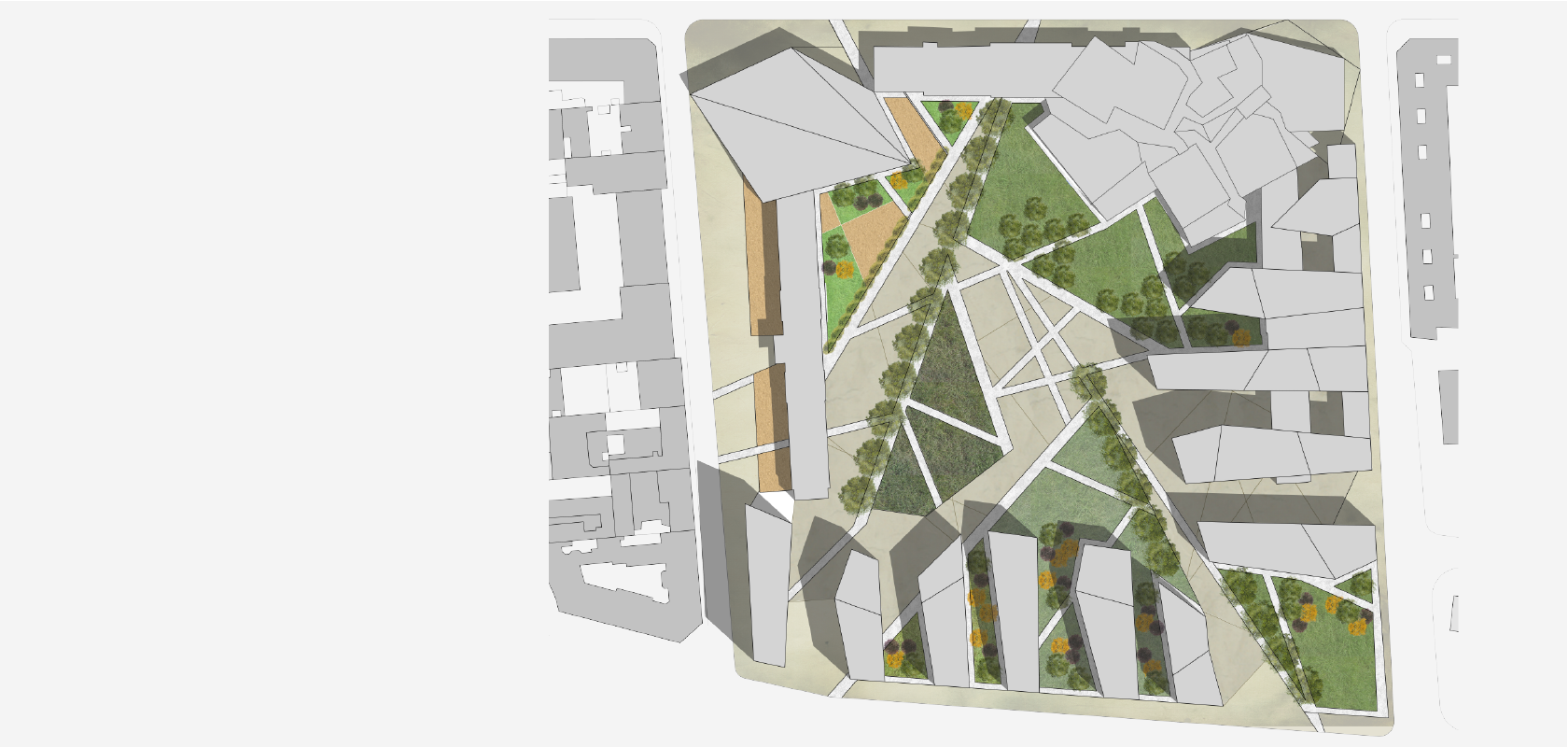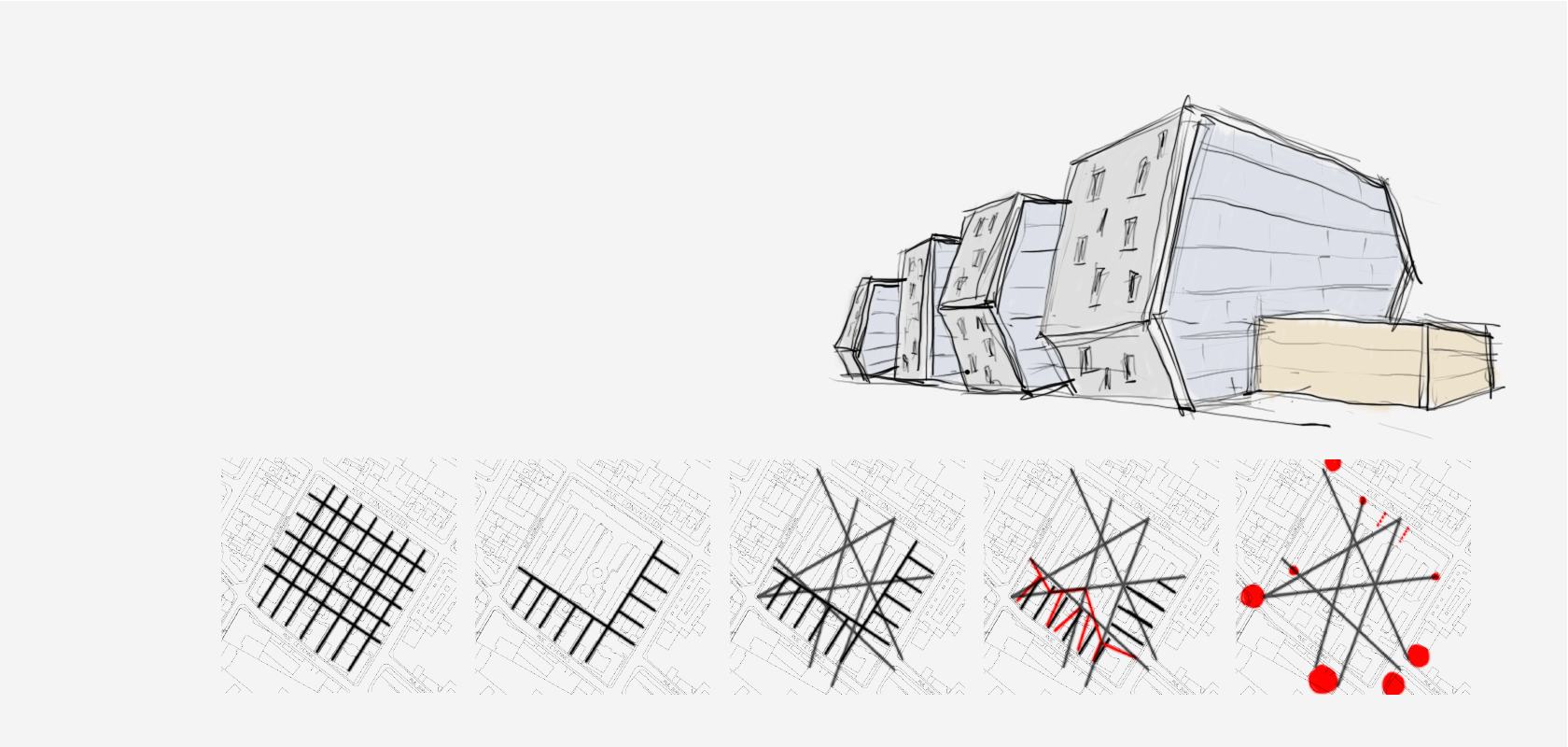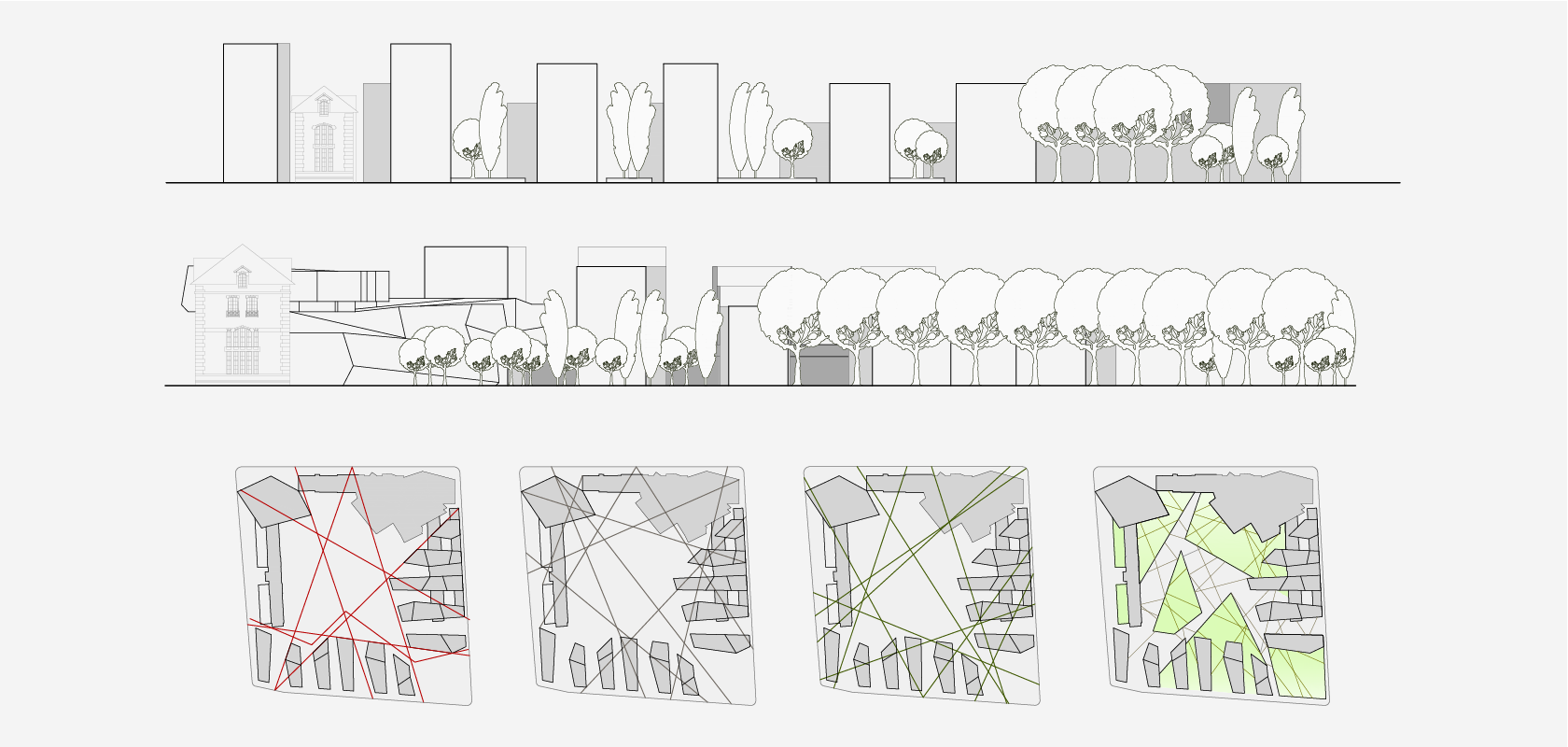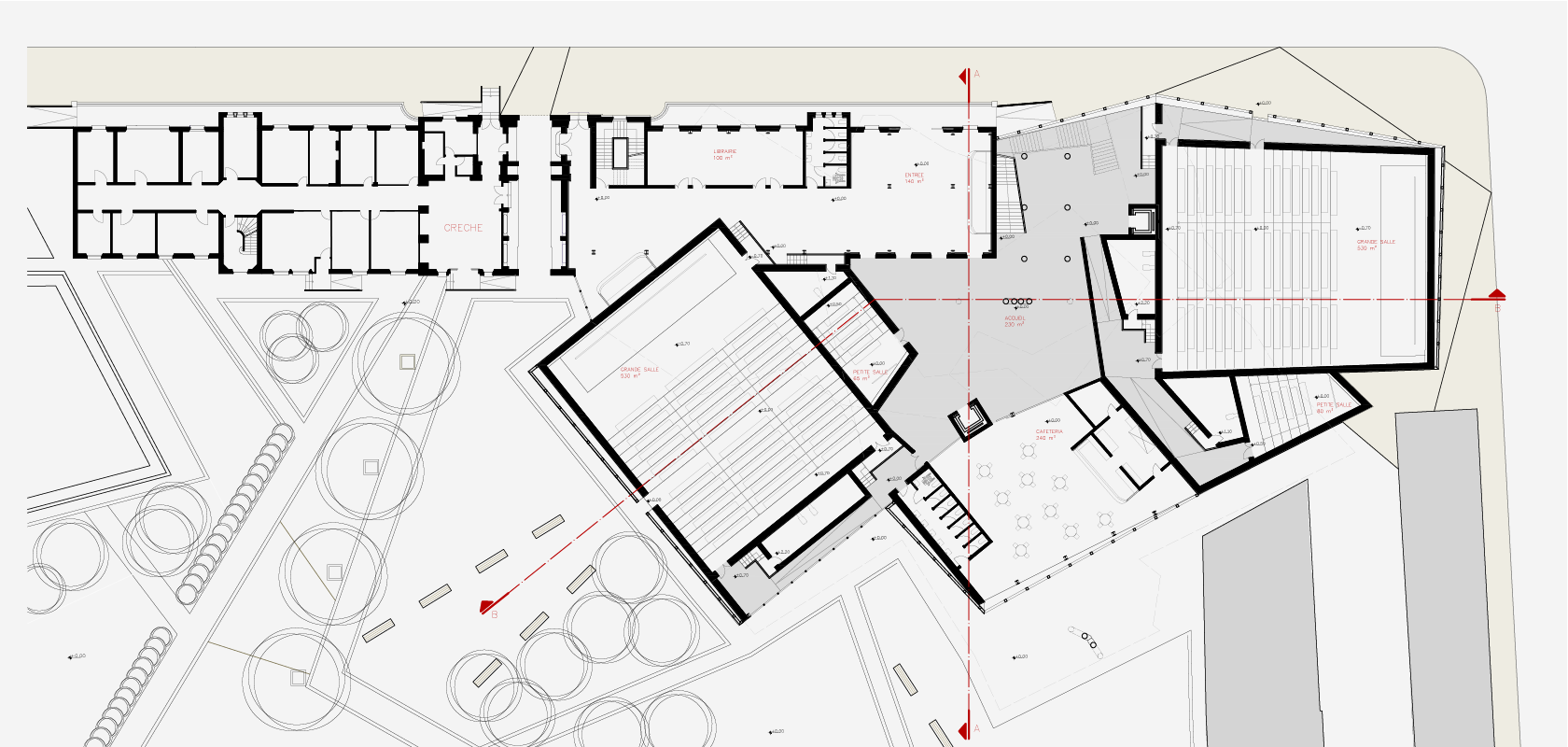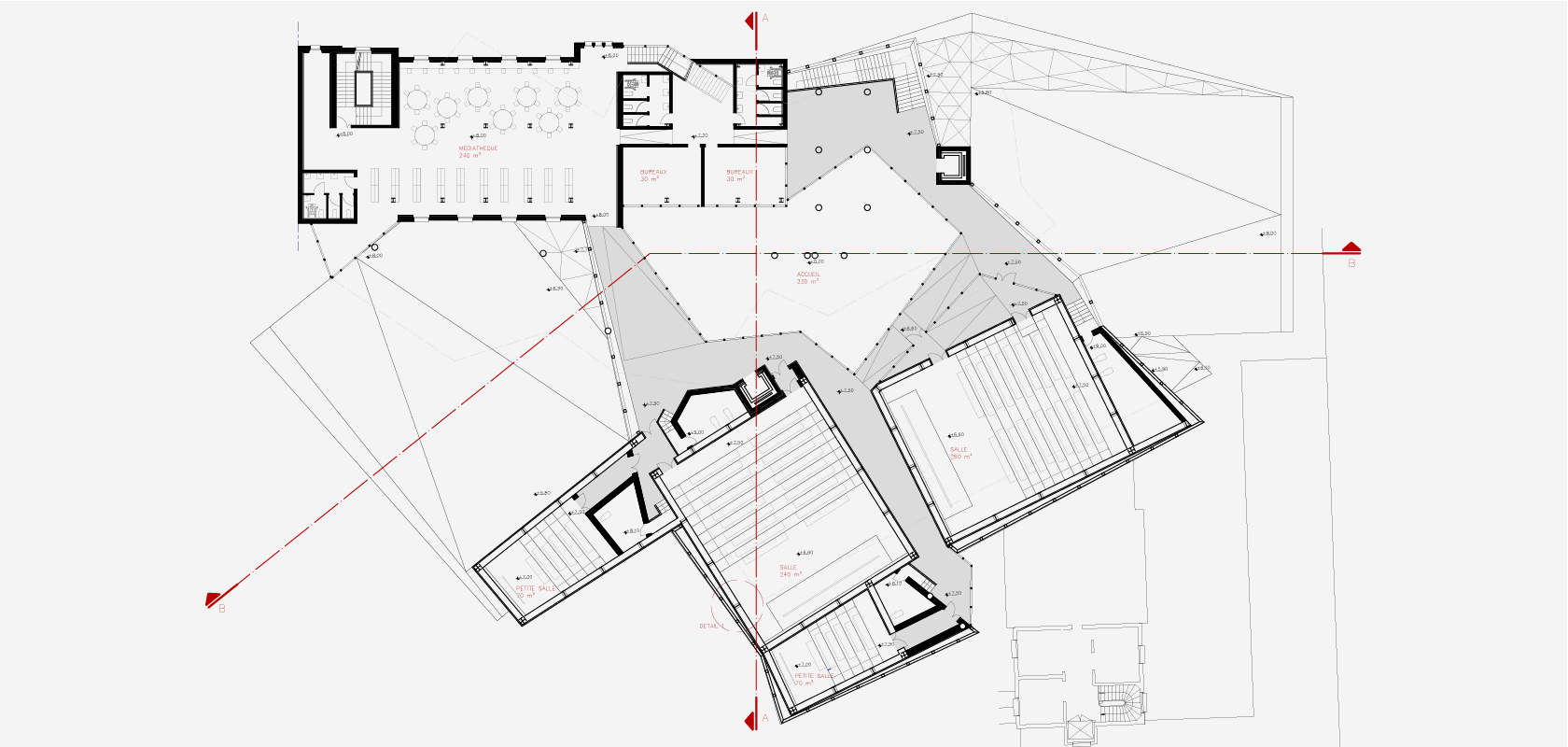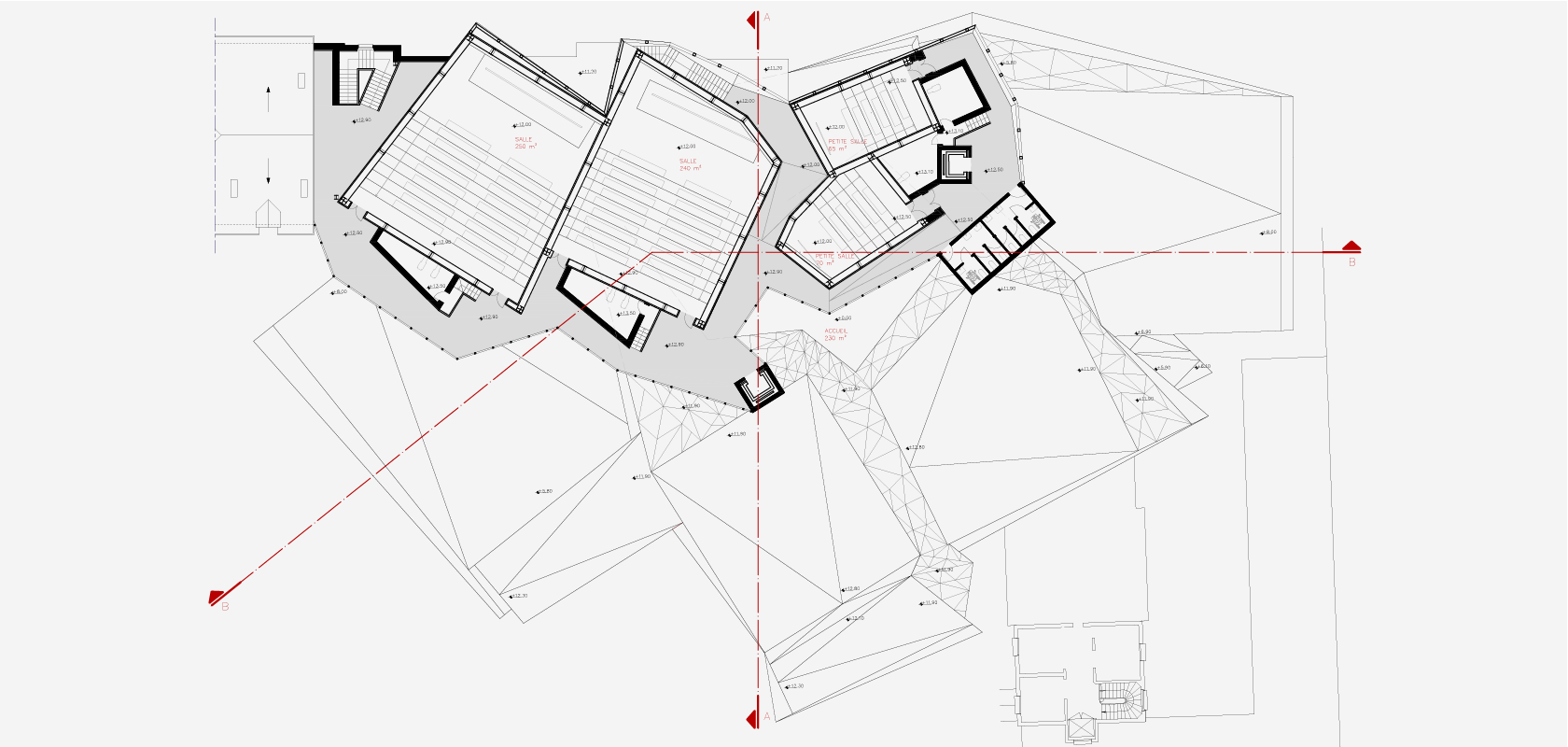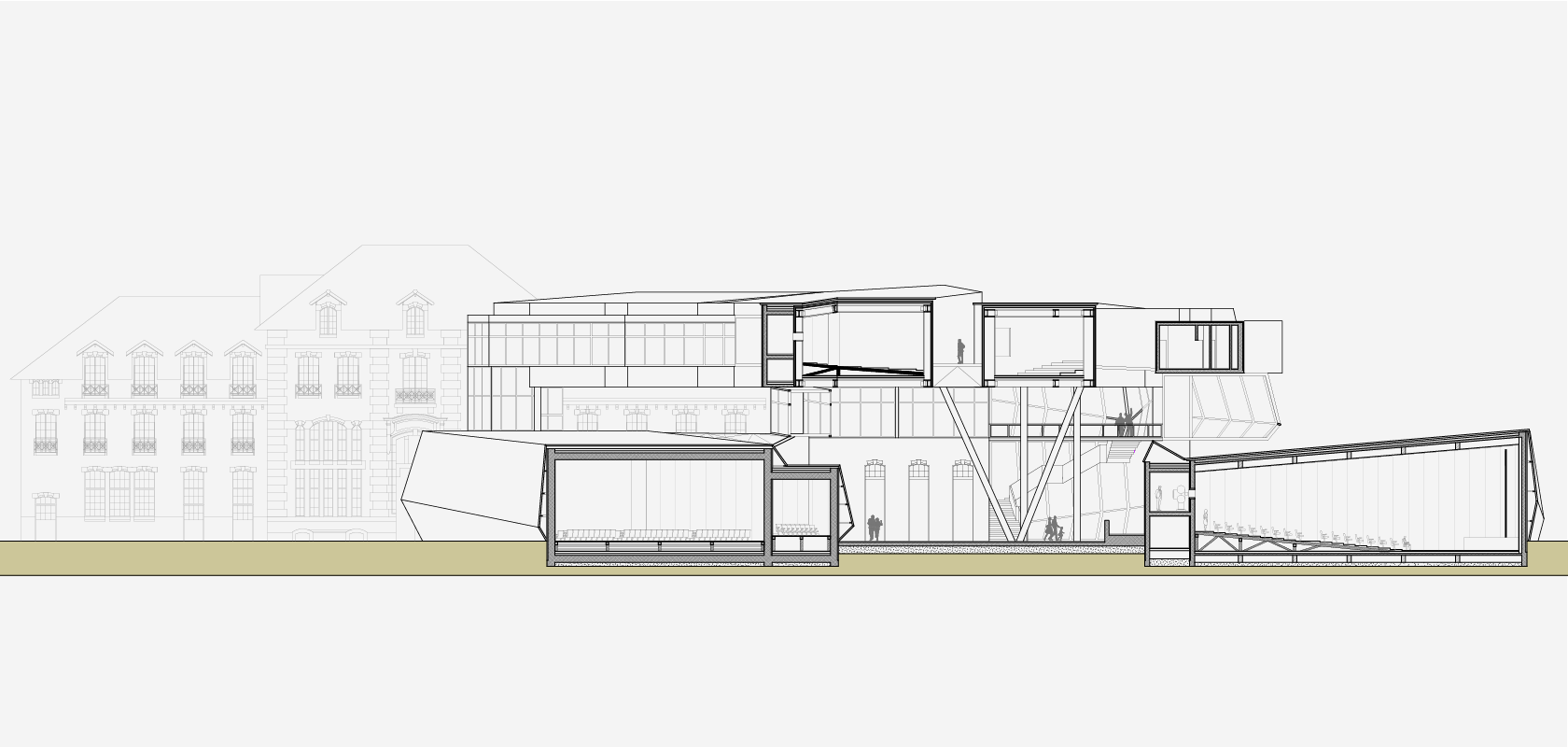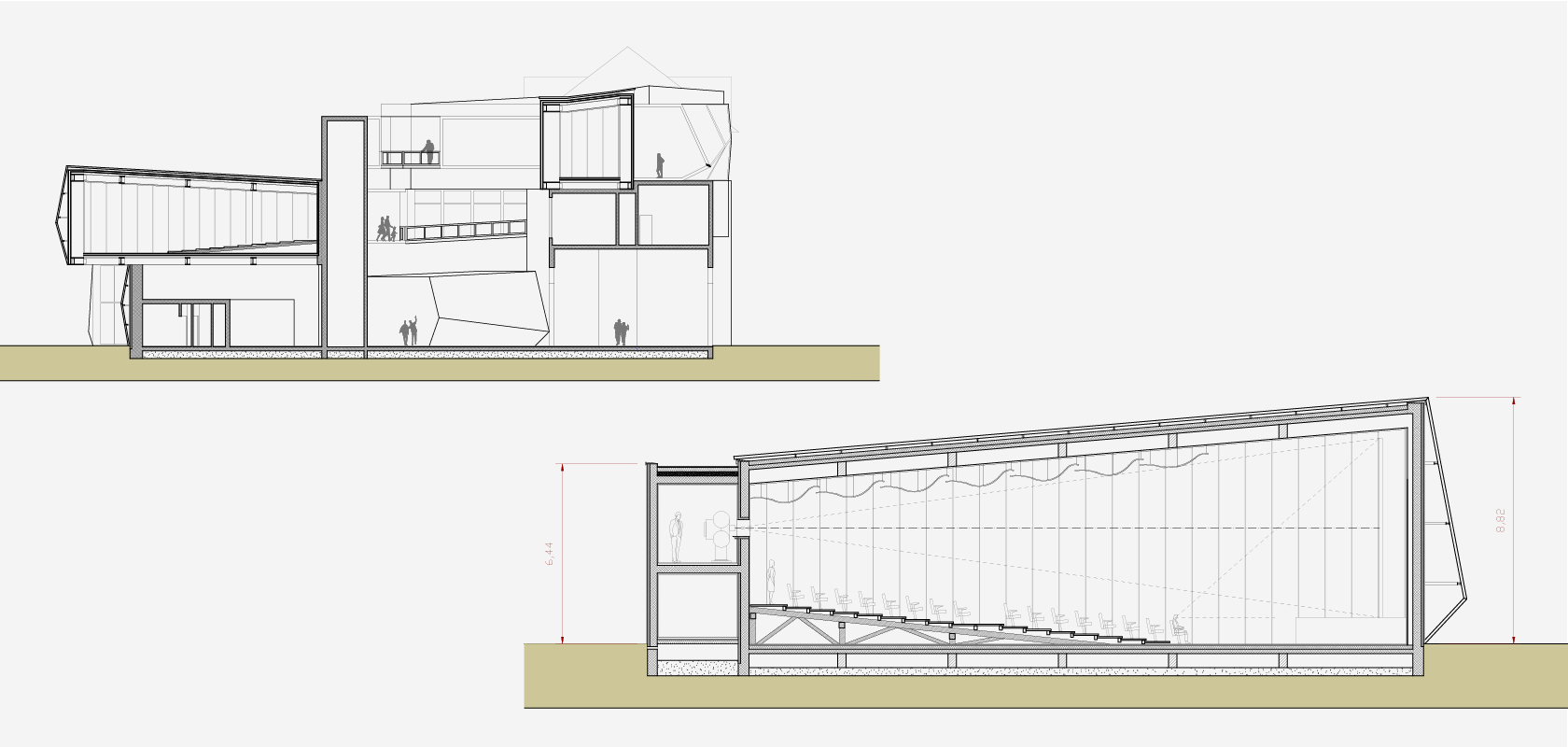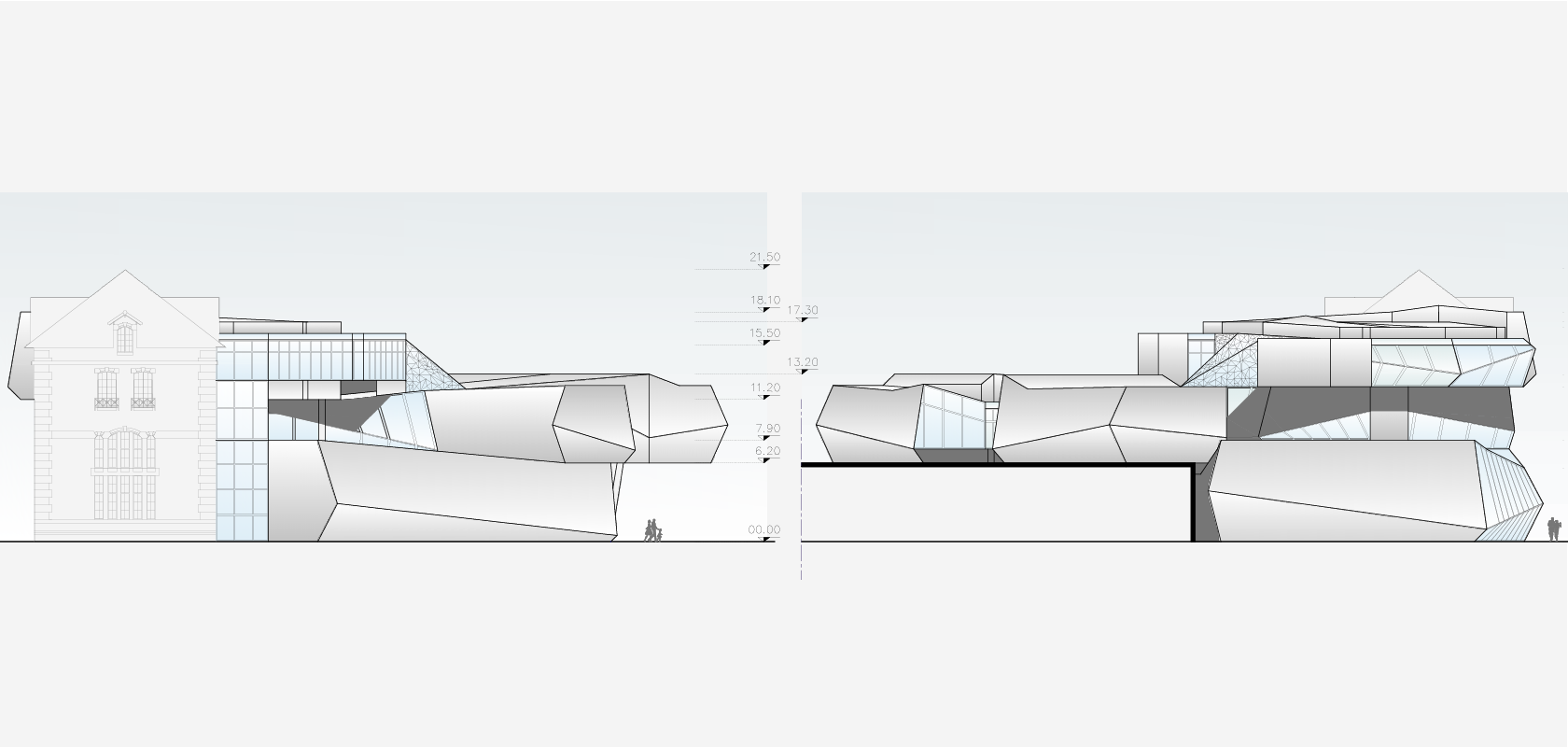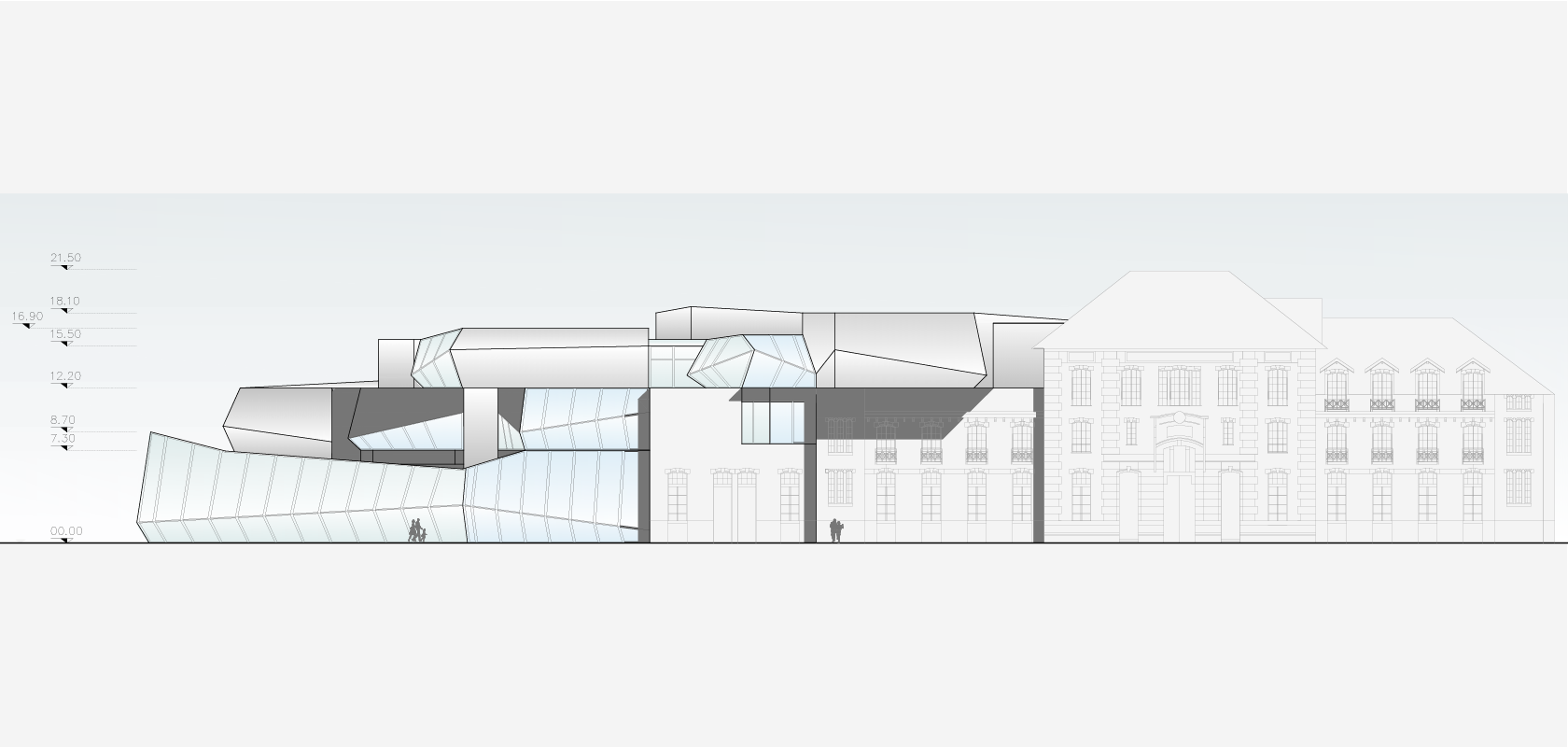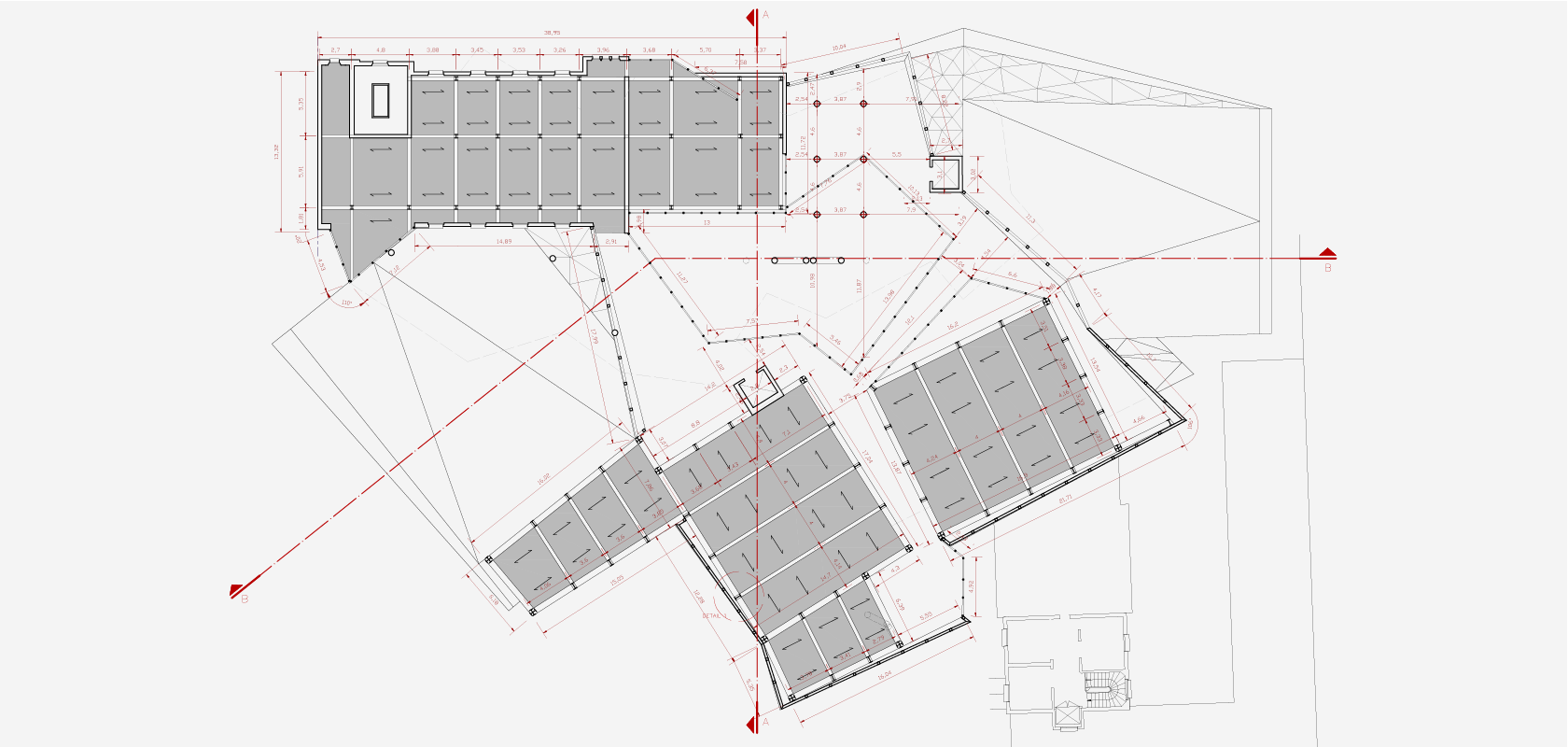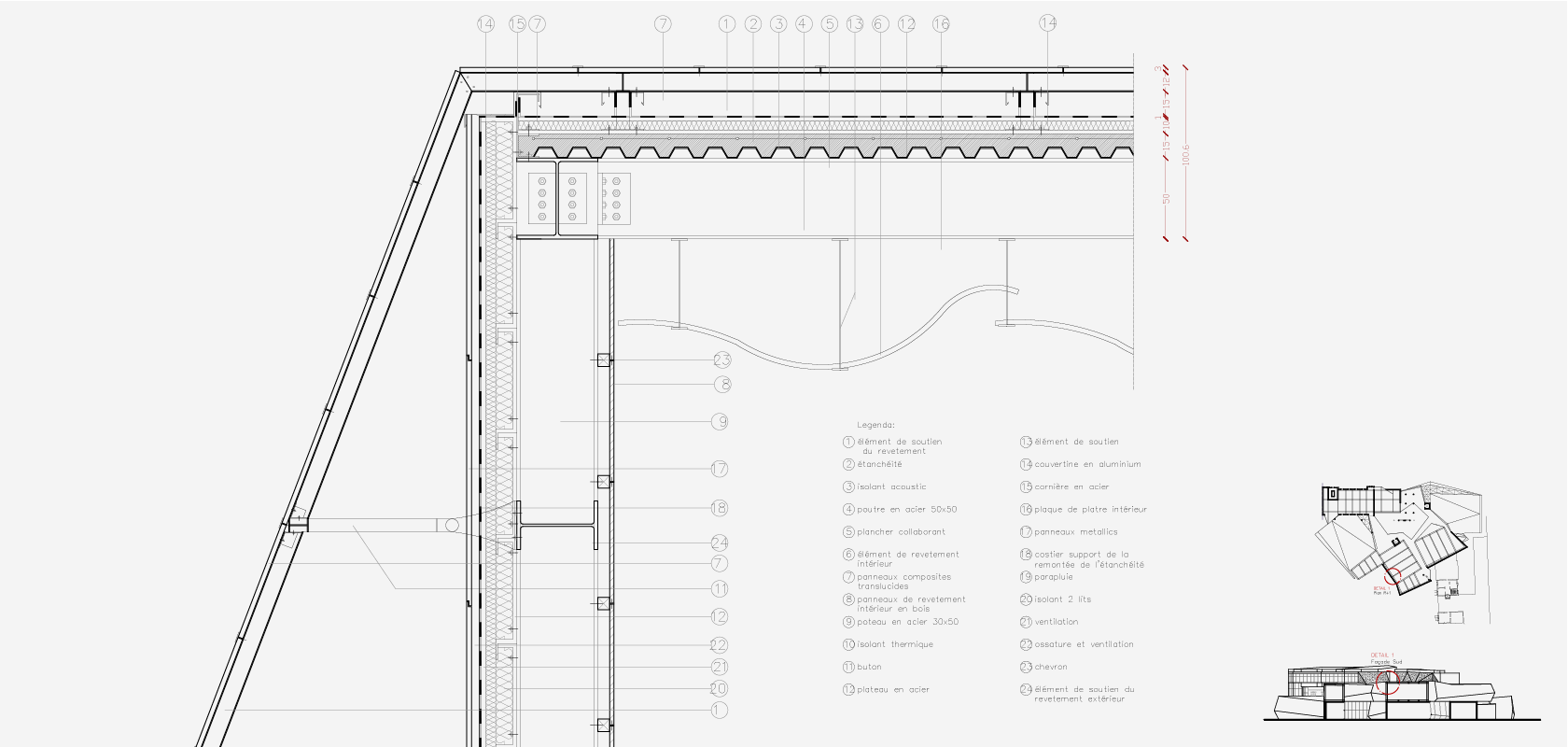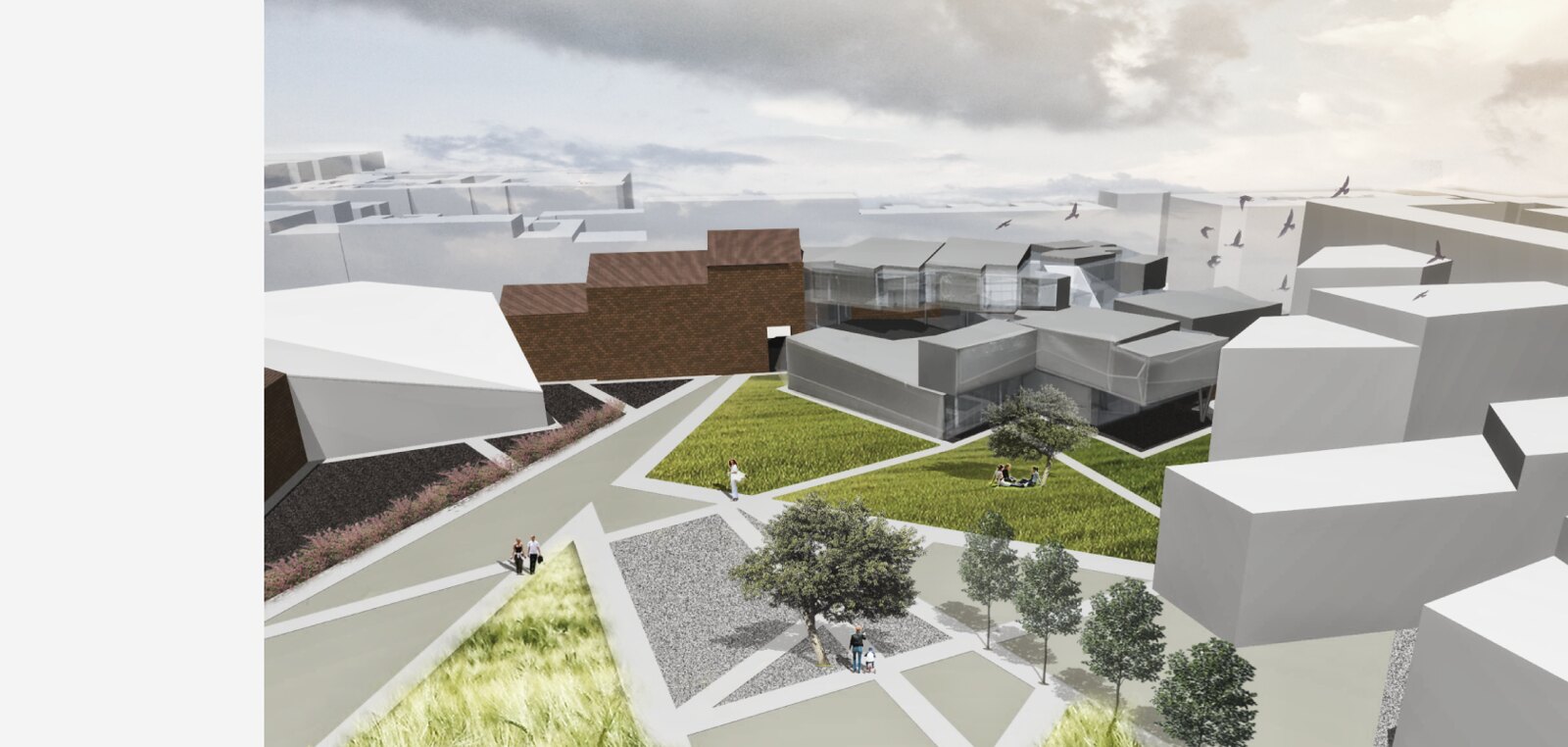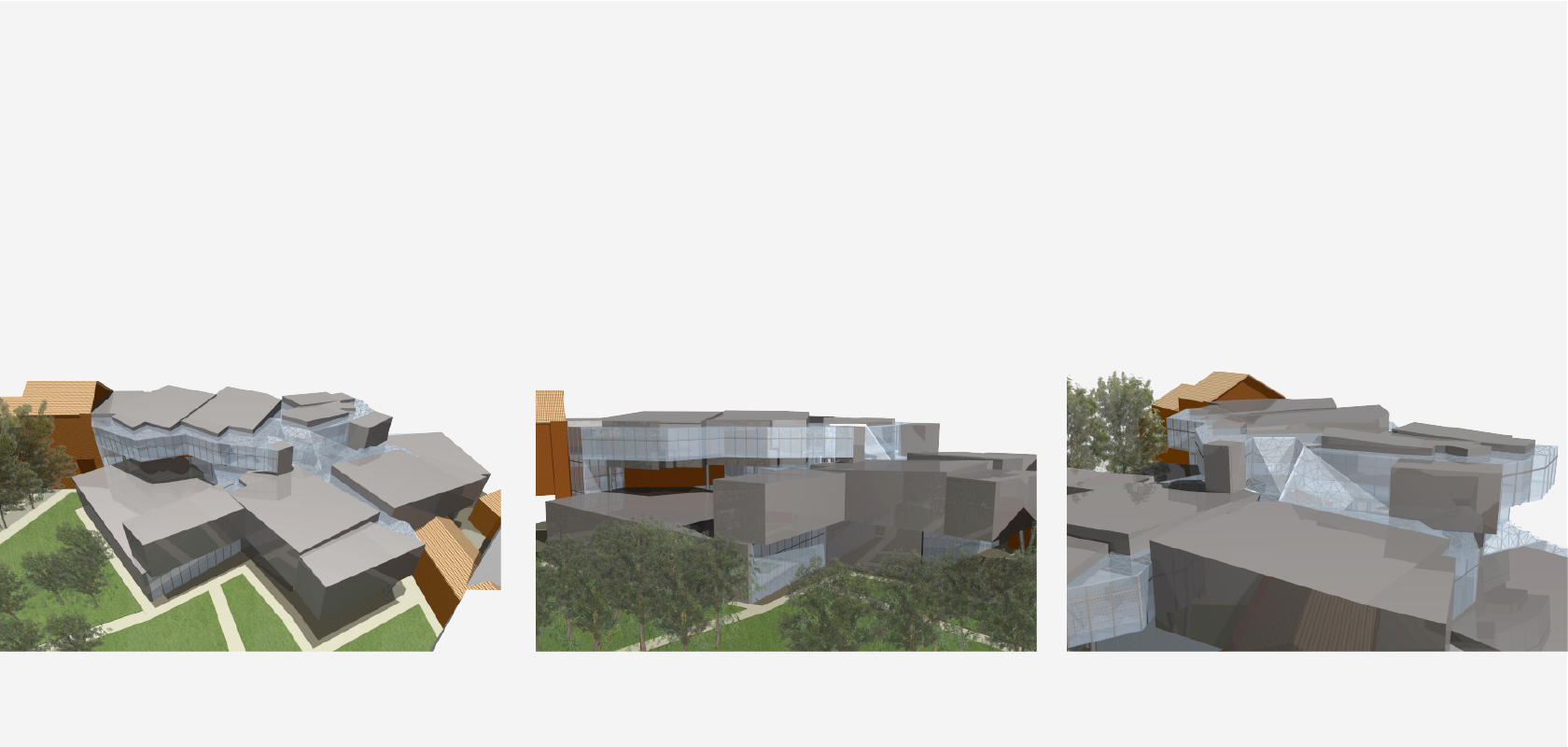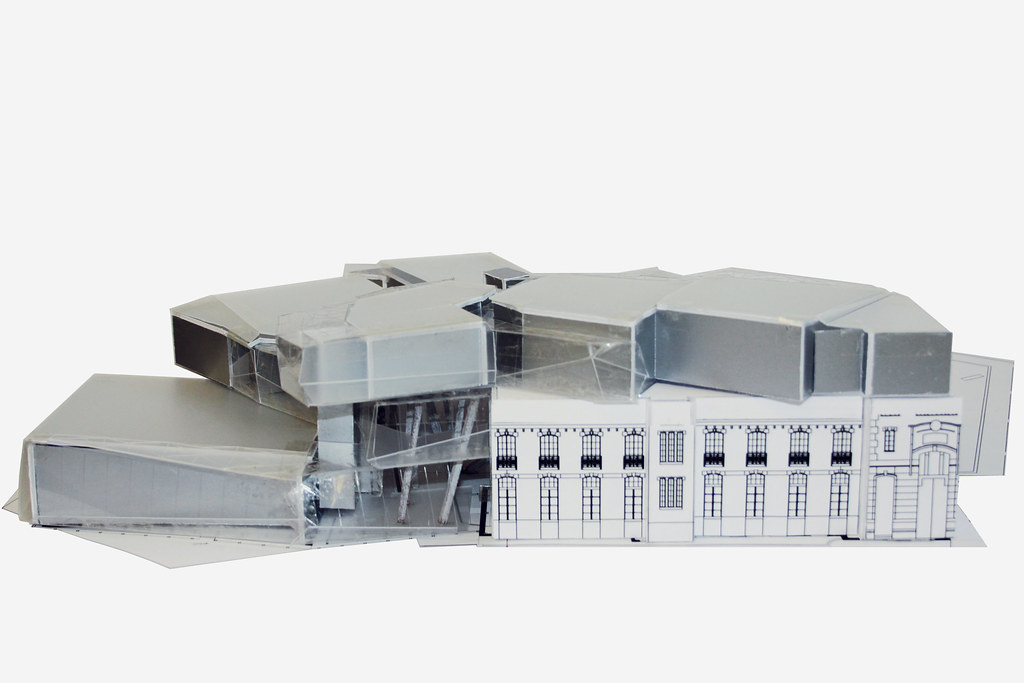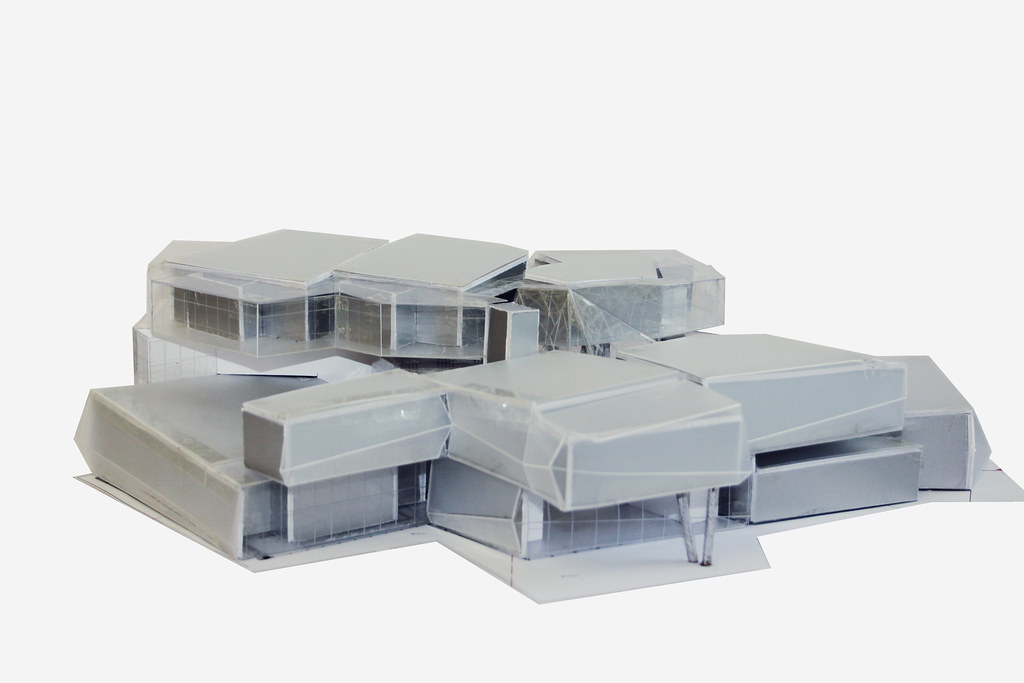- Type: Masterplan, Multiplex Cinema
- Location: Boucicaut, Paris, France
- Year: June 2010
- Other: Academic project at ENSAPVS
About
The idea of the plan was conceived from the analysis of the existing predominant lines of the site, characterized by the presence of an historic hospital. The concept consists of a regular mesh that merges existing buildings and the hospital itself. The aim is in fact to trace a series of urban tissues that refers to existing building features, such as the strong closure on the north street side, the minor density of buildings on the south and the consequent presence of a surrounding green belt. The multiplex was conceived from the fluxes developing on the sites: the idea is based on a wide distributed space, spread enough to allow the integration of all cinemas and functional spaces inside itself. Theaters are in fact realized as autonomous nodes both on terms of functional program and structure: the constructing technique is a self supporting cage made of steel. On the contrary, the distribution space that connects each unit is mainly in glass, not only to increase natural illumination but also to underline the symbolic value of spaces themselves: on one side, theaters are solid and opaque items, and on the other side, distribution spaces that flow through theaters, are transparent and permeable.

